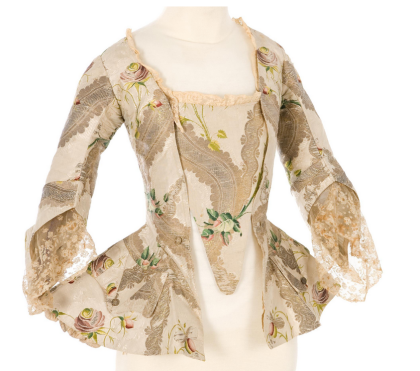Louis de Bourbon-Condé was the son of Louis de Bourbon, Duc de Bourbon and Louise Francoise de Bourbon - as such he was a Prince of the Blood and was given the title of Comte de Clermont. He was born in Versailles on 15 June 1709 and was destined to have a quite interesting and contradictory life.
At the age of just 11 years he was made
abbé commendataire of Saint-Claude which would indicate that a career within the church was chosen for him. Nevertheless, he was still a candidate for marriage. It was discussed that he should marry Mademoiselle du Maine but the union never came to be.
Although he would continue in an ecclesiastical career Louis did not choose to live as a monk. In 1730 he was widely known to be lover of the Duchesse de Bouillon and three years later he was attached to another lady: Marie-Anne de Camargo, a dancer in the Opera. After Marie-Anne came another dancer - Elisabeth Claire Leduc - who happened to be a pupil of hers.
He had an immense interest for architecture which would later come to show in the monasteries he would be granted. It was already visible in 1729 when he founded the Academy of the Petit-Luxembourg which became a meeting place for scholars and artists. As an abbot the title of abbé was added to his existing title so that he became the Comte-Abbé de Clermont.
In 1733 he was made abbot of Buzay and would go on to hold that position in two other monasteries. The one where he made the greatest impression was Chaalis where his project to renovate the monastery resulted in the necessity of relocating the monks. 1733 was also the year when Louis made a peculiar request to Pope Clement XII. Despite being an abbot Louis still wanted to take up arms for his country and was granted permission to do so from the pontiff. Consequently, he was made Lieutenant General (undoubtedly thanks to his status) and given command of the King's army in the Netherlands.
_by_an_unknown_artist.jpg) |
| Louis as Lieutenant General |
Just a year after having received the Pope's permission he resigned his post at Chaalis to take that of abbot of Saint-Germain-des-Pres. Between 1737-41 he conducted several substantial changes to the buildings of his new abbey. The manse of the monastery itself was remade by Jacques Hardouin-Mansart de Sagonne while the residence allotted to the abbot - the Château de Berny - was modernised and given the fashionable rocaille look.
As many other of the French aristocracy before him Louis was a Freemason. In 1743 he became the head of the French lodges which he continued to be for nearly thirty years. Despite being now comfortably established as an abbot with a pleasant abode Louis was not quite done with his military career.
His many talents and even more appointments shows that the Comte-Abbé was a complicated person. His character is described by Sainte-Beuve as being "one of the most striking specimens". That could easily be said about a man who was a Prince of the Blood, an abbot, a soldier, a libertine and apparently also an amateur man of letters. Saint-Beuve goes on to describe him as being in opposition to the Parliament and that he grew devout in his later years. Although he could be amusing he was equally capable of living a scandalous life when he was comfortable and well-pleased.
He was given command of the army in Bohemia where he suffered a defeat at Krefeld in 1758; following the French defeats during the Seven Years' War he would create several plans for improvements of the French army.
At court he was a good friend of Madame de Pompadour; it might be expected that he would otherwise have sought towards the Dévots given his vocation. But as he had often done before he went his own ways. It should be pointed out that Louis could hardly point a finger at Louis XV's infidelity considering his own personal life.
 |
Louis de Bourbon-Condé painted in the year of
his death |
By now his relationship with Mademoiselle de Leduc had grown to be a steadfast one. She was living with him in the Château de Berny and in 1765 they contracted a secret marriage! Two children came from the union: a boy and a girl. The boy would become known as the Abbé de Vendôme. Louis bought him an estate near his own - the two buildings were connected by a gallery.
The relationship with his wife could be stormy since Louis was rather of a jealous nature. He once lost his temper and scratched her forehead with a pen. Immediately regretting his act he contacted the King and managed to grant her a title of Marquise as an apology.
Louis died in Paris on 16 June 1771 and was buried in Enghien.





_-_002.jpg/220px-Alexandre_Roslin,_Louis_de_France,_dauphin_(1765)_-_002.jpg)


















+Marquise+de+Aguessenau+wearing+a+robe+a+la+turque+1789.jpg)
_by_an_unknown_artist.jpg)






















